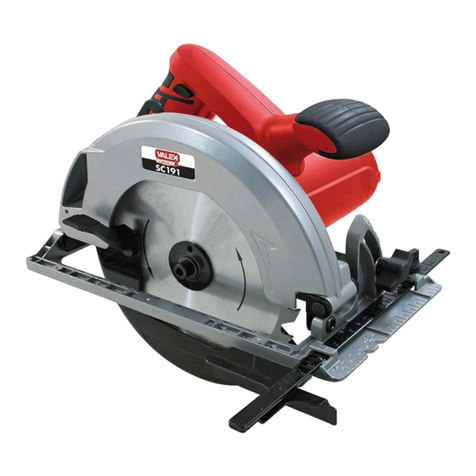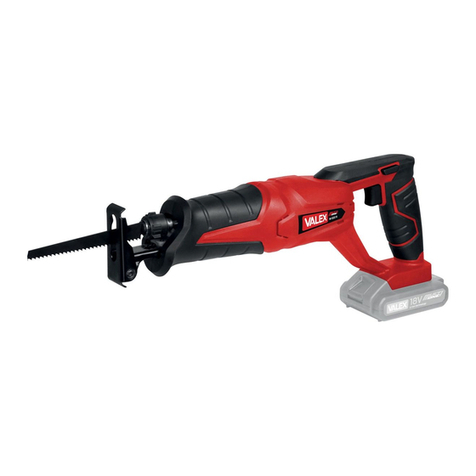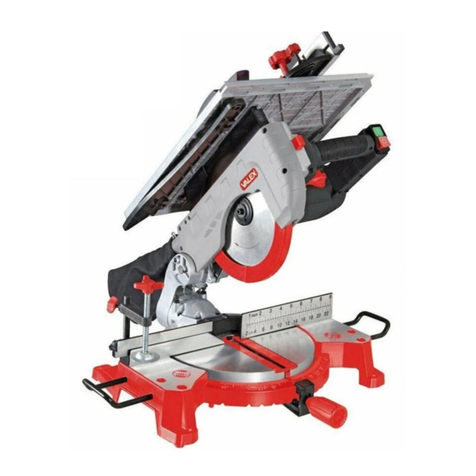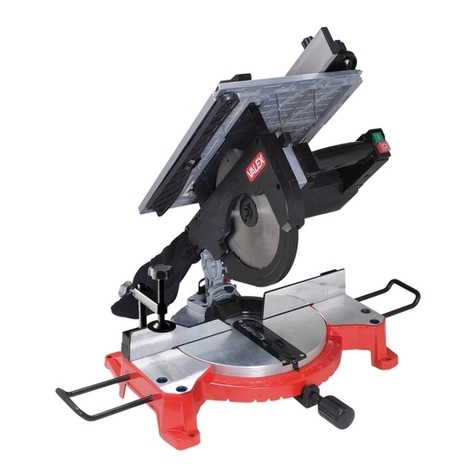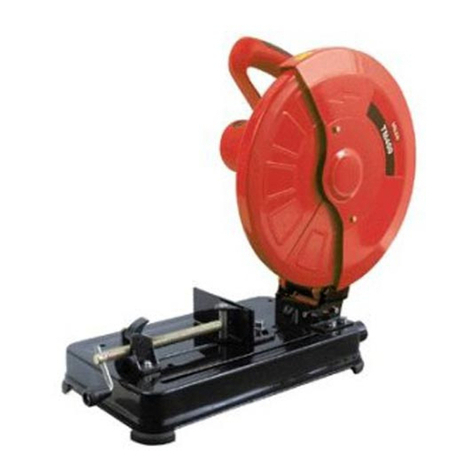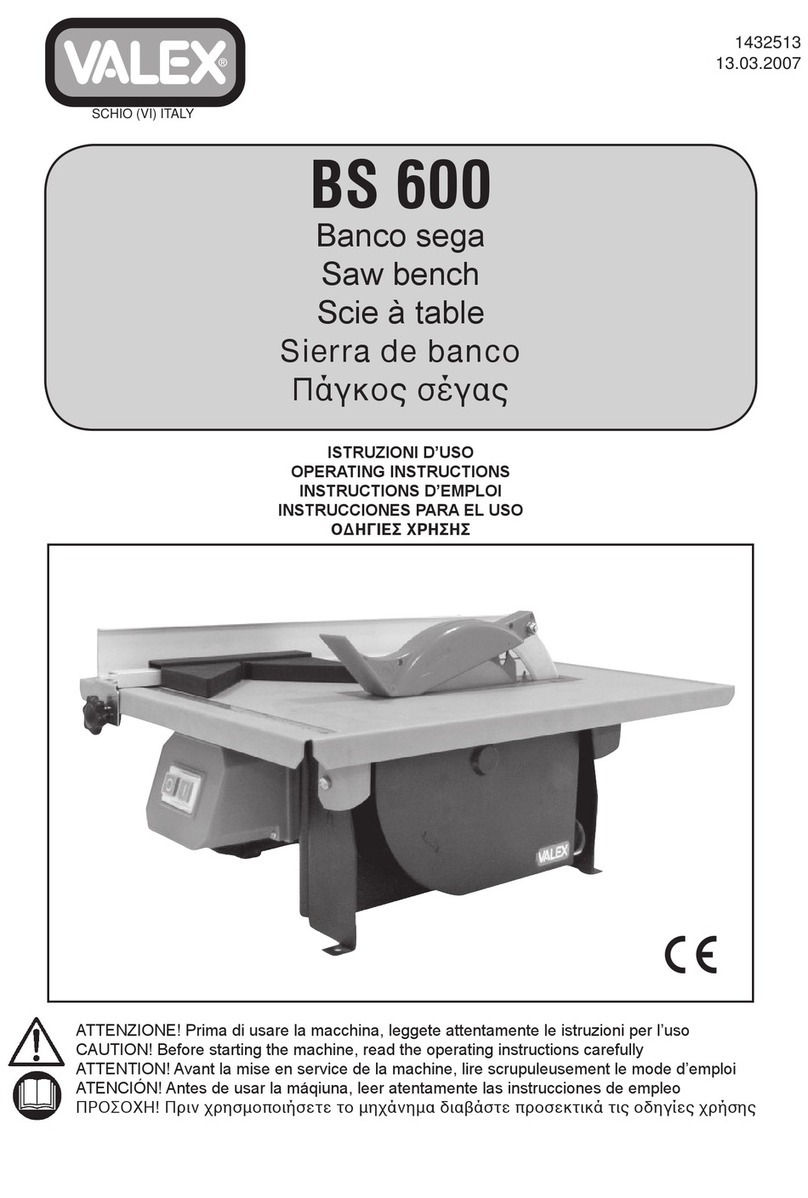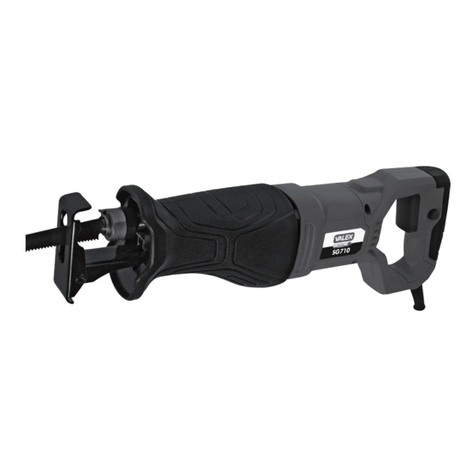
- 10 -
scollegando la spina della macchina.
Dopo aver letto attentamente i capitoli preceden-
ti, seguite scrupolosamente queste avvertenze e
consigli che vi permetteranno di ottenere il mas-
simo delle prestazioni dalla vostra macchina.
Procedete con calma, solo dopo aver acquisito
una buona esperienza riuscirete a sfruttarne a
fondo le potenzialità. Per prendere familiarità con
tutti i comandi, fate delle prove di utilizzo a vuoto
senza usare pezzi in lavorazione.
OPERATORE
La posizione normale dell’operatore è quella
davanti la macchina (lato interruttore), con
entrambe le mani a guidare e trattenere il pezzo;
solo in questa posizione è possibile eseguire il
taglio.
Attenzione! Mantenete le mani e il viso lontano
dalla lama e dalla zona di taglio, pericolo di
lesioni gravi!
PEZZO IN LAVORAZIONE
Il pezzo che tagliarete dovrà avere forma, di-
mensioni e peso compatibili con la macchina.
I legni duri non sono adatti a questa macchina.
Sul pezzo segnate con una matita la linea di
taglio; avviate la macchina e posizionatelo so-
pra il piano di lavoro, facendo attenzione a non
toccare la lama. Il lato più largo del pezzo deve
essere appoggiato alla base; non tagliate pezzi
con lato maggiore messo in verticale (in costa).
Allineate la linea precedentemente tracciata con
il tagliente della lama ed avanzate verso di essa;
completate il taglio e spegnete la macchina.
Su questa macchina si possono montare pezzi
di dimensioni definite (spessore H e profondità
P, vedasi cap. Dati Tecnici).
Attenzione! Per la vostra sicurezza è impor-
tante che la macchina sia fissata al banco o
piedistallo.
Attenzione! Per la vostra sicurezza è importan-
te che il pezzo sia correttamente bloccato. Non
tagliate pezzi a sez. circolare, legni vecchi o
fragili, legni irregolari, legni con crepe, legni
con chiodi o viti, rami o tronchi. Effettuate
sempre uno scrupoloso controllo visivo del
pezzo.
Attenzione! Rammentate sempre che la lama
può provocare il sollevamento improvviso del
pezzo ed è possibile che vi sfugga dalle mani.
UTENSILE LAMA
Verificate prima di ogni utilizzo la sua perfetta
integrità, l’assenza di rotture e deformazioni.
Periodicamente controllate l’affilatura della lama.
Quando è necessario sostituirla seguite le indi-
cazioni dei capitoli seguenti.
Attenzione! L’efficienza e la perfetta integrità
della lama producono un miglior risultato e
minimizzano il rischio di incidenti.
SOFFIAGGIO TRUCIOLI E POLVERI
La macchina è dotata di un dispositivo che
soffia un piccola quantità d’aria sulla zona di
taglio. Questo fa sì che la polvere prodotta venga
rimossa, a vantaggio di un taglio preciso.
Verificate che il tubetto in gomma sia collegato
da un lato all’attacco di mandata (pos.8) e
dall’altro al diffusore (pos.11) posto in prossi-
mità della zona di taglio.
Mediante una vite laterale è possibile regolare
l’inclinazione del diffusore, fare attenzione a non
stringere eccessivamente per non schiacciare
il tubetto.
ASPIRAZIONE TRUCIOLI E POLVERE (se pre-
sente)
La macchina può essere dotata di un collettore
(pos.16) per l’aspirazione dei trucioli/polvere.
E’ comunque da tener presente che durante il
taglio parte del materiale asportato verrà sca-
gliato anche attorno alla macchina e sul pezzo.
Per una aspirazione ottimale, collegate il collet-
tore ad un aspiratore di trucioli/polvere di legno,
mediante un tubo flessibile in materiale plastico
(entrambi non forniti con la macchina); il vostro
rivenditore di fiducia potrà consigliarvi nella
scelta più idonea.
Attenzione! Non avviate la macchina se non è
montato il tubo di aspirazione. Non infilate all’in-
terno del collettore le dita o attrezzi per tentare
di estrarre il materiale, pericolo di lesioni gravi!
REGOLAZIONE VELOCITA’ OSCILLAZIONI (se
presente)
La macchina può essere dotata di un regolatore
elettronico (pos.19) che varia la velocità delle
oscillazioni della lama.
LAVORAZIONE, TAGLI E MOVIMENTI
Il pezzo in lavorazione è in movimento sul piano
di lavoro, mentre l’utensile si muove vertical-
mente con moto alternativo per asportare il
materiale; solo durante la fase di discesa la lama
asporta il materiale.
Il motore fornisce l’energia per il movimento
dell’utensile, mediante un gruppo biella /mano-
